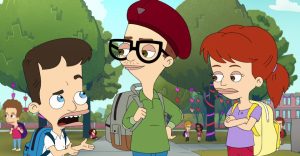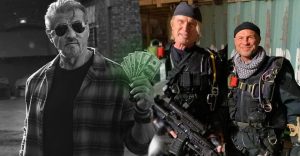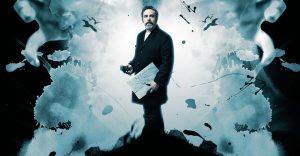10 Disney Instrumentals That Fans Instantly Know (& What They’re Actually Titled)

Disney never fails to satisfy when it comes to their music – it’s practically been that way since the 1920s. It wouldn’t be an unfair assumption to say that everyone, regardless of exposure, knows or at least has a favorite Disney tune. From the easily hummable “Heigh-Ho” to the infectious “We Don’t Talk About Bruno,” Disney has a way with (musical) words.
That all being said, sometimes all Disney needs is a simple tune to truly hook a listener in. Whether fans are deeply exposed to film scores or not, the studio has released more than a few compelling compositions, some even being recognized by just a few notes.
The Sorcerer’s Apprentice (Fantasia)

It wouldn’t be a stretch to say that the iconic “Sorcerer’s Apprentice” is likely one of the first pieces of classical music many young viewers can easily identify, largely thanks to Disney. The image of Mickey Mouse conjuring magic spells and bringing brooms to life is one that has been permanently cemented in film history, and with it the famous composition by Paul Dukas.
It’s a theme that has been used countless times over by Mickey and others under the Disney name, even the Simpsons parodied it in one of their couch gags. Simply put, it’s a classic composition that Disney has imprinted in the popular consciousness for years.
Night On Bald Mountain (Fantasia)

Disney wasn’t the only one to use Modest Mussorgsky’s famous “Night On Bald Mountain,” but they are perhaps the most famous. The theme has been used in everything from Looney Tunes to Batman, but the first frightening half of Fantasia’s finale is what burned it into the minds and ears of viewers. It’s practically been heard every Halloween since.
The powerful and threatening music was paired perfectly with the intense imagery of St. John’s Night/Walpurgisnacht as Chernobog summons the spirits of the underworld up from their graves for a firey and fiendish bacchanal. The marriage of the monsters and the music was truly a stroke of genius on Disney’s part, and the payoff certainly shows. To this day, it’s still one of the studio’s most frightening moments.
Sleeping Beauty Waltz (Sleeping Beauty)

Sleeping Beauty is one of Disney’s most famous fairytales, but it drew from more than one source in its production. The original fairytale is an obvious influence, but the Disney production arguably drew much more from the ballet by Tchaikovsky. That factor is clearly supported by the use of his music to score Disney’s adaptation.
Although viewers and fans might know it better as “Once Upon a Dream,” the true title is “Sleeping Beauty Waltz.” It’s essentially the same tune, minus Disney’s lyrics. It even makes a return at the end of the film for a literal waltz between Aurora and Philip.
Married Life (Up)

Michael Giacchino is easily one of Pixar’s biggest assets, and he has produced some incredible hits during his time with the studio. Though perhaps his most famous piece is the composition that accompanies the iconic opening ten minutes of Up displaying the “Married Life” between Carl and Ellie.
In those ten minutes, viewers are treated to one of the most emotional love stories ever animated, and the music does all the talking while the animation paints a beautiful expositionary tale before the actual plot unfolds. Even the polka-inspired version played at the Disney Parks evokes that same heartwarming sensation experienced with the film.
Colette Shows Him Le Ropes (Ratatouille)

Pixar has had a strong affinity for jazz even before Soul went into production, and that is demonstrated by this theme from Ratatouille. Although it’s being used for a training montage, it’s a very snappy and sexy piece of French jazz that gives what might have been a normal movie cliche a little artistic flair.
As Remy and Linguini learn about delicious animated meals and recipes, the workings of Gusteau’s restaurant, and the cooks that run it, the audience is treated to an eccentric theme that makes solid use of its accordion and rhythm section. Outside the film, the melody can be heard throughout Epcot’s France pavilion and at Disney Springs.
Bundle Of Joy (Inside Out)

Think of this track as Inside Out’s “Married Life.” It’s one of the first pieces of music that the audience is exposed to before Pixar’s surreal journey through the mind of a young girl officially begins. The first few defining notes on the piano are what give it away, but the music soon evolves and builds as the song progresses, becoming as intimate and complex as the emotions in Riley’s head.
There’s something incredibly ambient about the piece, it’s peaceful and stimulating at the same time. With all the attention to neural-themed detail scattered throughout the movie, it wouldn’t be a shock if this was done with the greatest intent.
Life’s Incredible Again (The Incredibles)

It might be memes and TikTok that are currently bringing this theme to the forefront, but it’s a piece that deserves more love and attention. It’s a swelling big-band-inspired number worthy of a James Bond movie or Glenn Miller Concert, and it fits Mr. Incredible’s newly reinvigorated lifestyle perfectly.
It’s an infectious piece that blends both a joyfully jazzy theme and Mr. Incredibles own super-inspired backing track to create a sensational number that reflects the protagonist’s emotional state. The audience getting wrapped up in the music is simply a side effect of the exposure.
Monster’s Inc (Monsters Inc.)

Although a better title for this piece might be “If I Didn’t Have You: Saxophone Version,” the theme from Monsters Inc. is perhaps one of the catchiest things to come from Randy Newman since “You’ve Got A Friend In Me.” Even if a listener hasn’t heard “If I Didn’t Have You,” It wouldn’t be wrong to say they’d still be humming the tune.
As a lyricist, sometimes Newman can be hit or miss. When it comes to scores and instrumental compositions, however, the man truly knows what he’s doing. Next to something out of Toy Story, it might be one of his most recognizable instrumental pieces.
Prologue (Beauty And The Beast)

A tried-and-true Disney fairytale needs to capture that sense of epic fantasy the company has cultivated for decades. Right from the first few seconds of the film, Beauty and the Beast begins its tale with an opening overture that’s as magical and mysterious as an enchanting story can be. From the tinklings of the piano to the swelling of the strings, it strives to stir emotions of excitement as the story of the cursed prince unfolds.
As David Ogden Stiers narrates the story of how the Beast became the Beast, a hypnotic and enchanting melody sweeps across the stained glass visuals that set the stage for the rest of the film. It’s a composition that could only evoke thoughts of enchanted castles, magic spells, and a tale as old as time.
This Land (The Lion King)

This theme from The Lion King is one that truly demonstrates how effective Disney can be at creating compelling and memorable pieces of music that continuously leave listeners spellbound. Leave it to the musical genius of Hans Zimmer to create something that is both soft and sweet, yet large and majestic.
The melody is exceedingly simple, essentially a descent down a scale, but it builds into a large crescendo that leads into “Busa.” “This Land” appears twice to set the mood for a night in the Pridelands, beginning with Rafiki’s tree and coming back again before the appearance of Mufasa’s ghost. It’s a simple tune many Disney fans recognize from only the first few flute notes.
About The Author

















